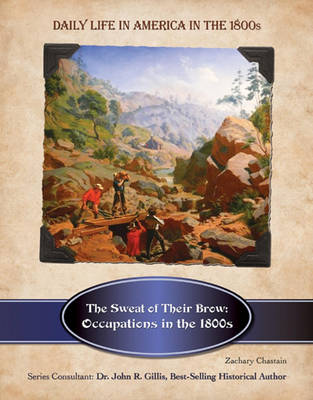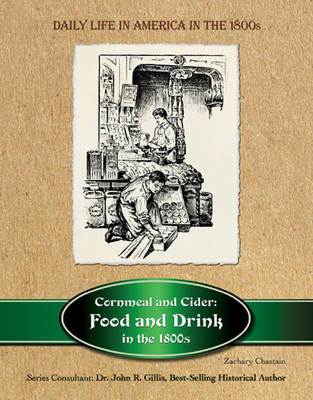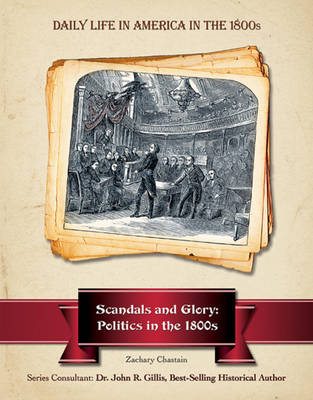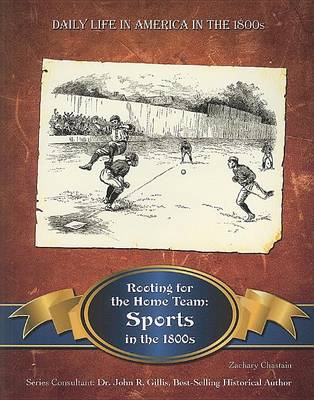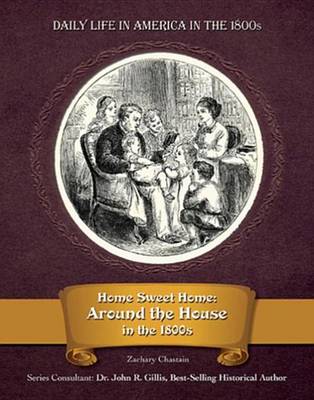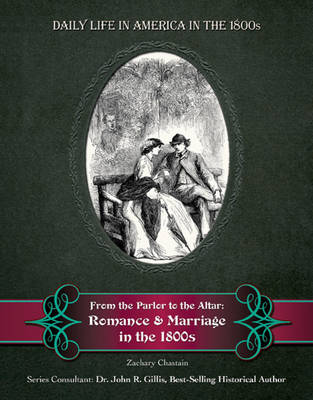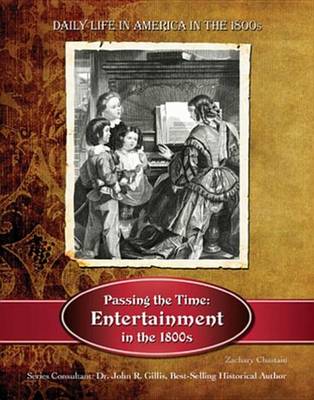Daily Life in America in the 1800s
7 total works
America in the 1800s was a very hard-working society. Early in the century, farmers, craftsmen, and housewives worked very much the way they had for centuries-by their own physical labor and "the sweat of their brow." The growing industrial economy brought millions of workers-people leaving their farms and new immigrants-into the factories and workshops of America, where the work was hard, the hours were long, and the pay was low. Women and children made up a large percentage of the industrial workforce, and conditions were often miserable and dangerous. Meanwhile, a small class of industrialists built vast fortunes. As the century progressed, improved technology, worker's rights legislation, and the rise of trade unions helped to alleviate some of the misery of American workers, but for much of the 1800s, the lives of an average working-class person was one of hard toil, limited opportunities, and the constant threat of poverty.
The farmers, workers, and pioneers of America in the 1800s were nourished by a tradition of hearty, down-home cooking that is still a part of our national cuisine-New England baked beans, roast beef, turkey, corn on the cob, and pumpkin pies. With roots in the British Isles, and with important contributions from Native American food plants and cooking techniques, American food and drink quality and seasonal variety was vastly improved during the 1800s by new technologies in transportation, food storage, hygiene, and preservation, growing national and world markets, and-not least-the delicious ethnic cuisines of new immigrant groups. Hungry for innovation, quality, and economy, Americans in the 1800s became the best-fed nation in the history of the world!
With the principles of democracy firmly established after the War for Independence, Americans in the 1800s took their politics very seriously. As more and more male citizens gained the right to vote, elections became very public, hotly contested, and sometimes even violent. In the cities and towns of America, politicians courted political power and influence among new immigrant communities; buying votes and stuffing ballot boxes was shockingly common. While the major national political issues of foreign policy, taxation, the abolition of slavery, and states' rights took center stage in Congress, Americans split along regional and party lines that still exist in the twenty-first century. Scandals over greed and corruption caused whole city governments to fall, but America also produced some of the greatest statesman and political leaders in its history. Former slaves, poor immigrants, and women demanded their right to vote.
America's love of sports goes back a long way. Baseball, basketball, and football all came of age in America of the 1800s. While men like Abner Doubleday may not have invented these sports, they did much to popularize them as rules were officially standardized and national-level organizations were founded. Amateur (and, later, professional) teams sprang up in towns, factories, and schools across America and "rooting for the home team" built strong community bonds and stimulated (usually) friendly rivalries. From horse racing to boxing to competitive target shooting, Americans would watch, cheer for, and bet on just about any contest of strength and skill. The growing class of Americans with leisure and money to spare discovered tennis and golf and polo, and women for the first time participated in competitive sports. Long before the World Series and the Super Bowl, Americans were idolizing their favorite athletes, while they played and watched sports with enthusiasm.
In rough frontier cabins, tidy farmhouses, and elegant townhouses, Americans in the 1800s were dedicated to living as well and as comfortably as their circumstances allowed. The American home was a sacred institution, the seat of family life where the patriarch ruled with Mother at his side as guardian of the home, and the children were raised with strict discipline and strong values. Changes in taste and fashion, improvements in technology (indoor plumbing and a host of new labor-saving devices), and social change transformed home and family life in the 1800s, as opportunities for leisure activities and commercially produced consumer goods came within reach of the average American. But the strong American tradition of the sanctity of the home, consumerism, and the importance of a happy family life has its roots in the homes of nineteenth-century Americans.
We're all here because of people who met and fell in love in the past! In the 1800s, most young men and women were bound by powerful traditions of family, church, and society that limited their choices in romance and marriage. As an economic and community-building institution, marriage options were traditionally controlled by the older generation. Marriages were often arranged by families, and the bride and groom's personal feelings for each other were much less important than they are today. But as in so many other ways, America was a new and more open society. Communities of people from different and diverse backgrounds were established in a new land, and young people came together in a freer, more open environment. Romantic love flourished in the America of the 1800s as it never had before, with a whole variety of courting and marriage customs, many of which we still cherish today.
With a six-day workweek, long hours on the job, and the hard labor required to keep house, leisure time was precious in the 1800s. Without recorded music, radio, movies, TV, video games, or the Internet, Americans had to make their own fun, and most of it was simple and very low tech-singing around the family piano, visiting with neighbors, or picnicking in the woods. In the bigger towns and cities, theaters offered live, professional entertainment ranging from classic plays to raucous minstrel shows. In the smaller towns and rural areas, people waited anxiously for those few times a year when a traveling show or circus might come through the area. As the 1800s progressed, leisure time and economic resources increased for many Americans and a more sophisticated public demanded new and more exciting amusements. Read all about America at play in the 1800s!
